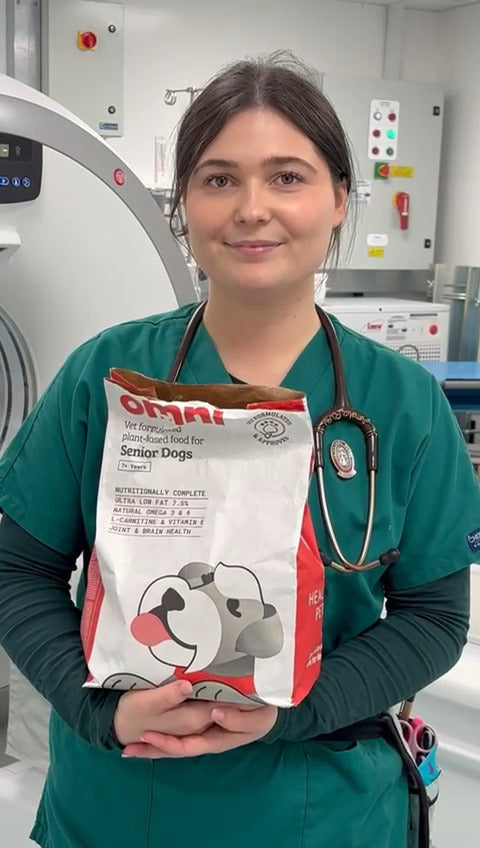Skin and Coat Supplements for Dogs: A Revolution in Irritated Skin Treatment

Skin and Coat Supplements for Dogs: A Revolution in Irritated Skin Treatment
Skin and Coat Supplements for Dogs
Dogs, like humans, can suffer from dry, itchy, and irritated skin, which is often uncomfortable and distressing. Our veterinary team has come up with a solution to address this common issue – a 1-a-day, soft chew supplement designed to bring efficacy, convenience, and enjoyment to your dog's skincare routine - Omni Rescue the ‘Irritated Skin’ supplement.
Dog Irritated Skin Treatment - The Benefits
Our veterinarians have carefully crafted this supplement to deliver maximum impact with minimal effort. The soft chew is not only a treat for your dog but also a smart way to address dry, itchy, and irritated skin with many benefits.
Supports Healthy Skin: Coconut oil and Vitamin C nourishes the skin and coat, promoting overall skin health.
Reduce Redness and Inflammation: With Beta-glucans and Vitamin E, our formula works to reduce oedema and skin irritation, providing relief from redness and inflammation.
Hydrate & Regenerate Skin, Hair, and Nails: A concentrated source of phospholipids and fatty acids, Beta-glucans, dried algae, flaxseed oil, and coconut oil combine to hydrate and regenerate the skin, hair, and nails, ensuring a strong and resilient coat.
Omega-Rich Algae: Dried algae, a concentrated source of phospholipids and fatty acids, plays a vital role in healthy skin regeneration and coat growth.
Protective Skin Barrier Function: Flaxseed oil, rich in Omega 3 & 6, boosts the protective skin barrier function, safeguarding your dog's skin against environmental stressors.
Collagen Boosting: Blueberries, a natural collagen booster, increase skin elasticity for a healthier and more vibrant coat.
Neutralise Free Radicals: Vitamin C acts as an antioxidant, neutralising free radicals caused by irritated and inflamed skin.
Reduce Skin Swelling and Redness: Vitamin E contributes to reducing skin swelling and redness, providing additional comfort to your pet.
Convenience of a Soft Chew, Efficacy of a Supplement:
The 1-a-day soft chew is a revolutionary vet-grade dog supplement created by clinical practitioners. Cruelty-free, sustainably made, and tailored for six specific body systems, our supplement ensures that your dog receives the care they deserve.
In conclusion:
Make the smart choice for your pet's skincare – choose Omni’s Skin and Coat Supplements. A delicious, low-calorie, and convenient solution that will keep your dog's skin healthy, happy, and irritation-free.
Check it out here!






 85 Great Portland Street, 1st Floor, London, W1W 7LT United Kingdom
85 Great Portland Street, 1st Floor, London, W1W 7LT United Kingdom